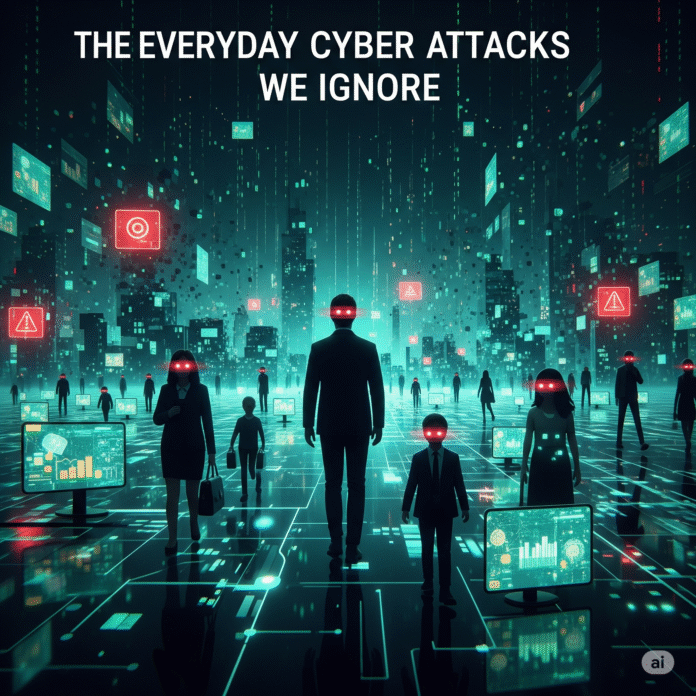You’re more likely to get hacked by a click than by a criminal.
In today’s hyper-connected world, where banking, shopping, education, and even
healthcare rely heavily on digital platforms, cybersecurity has become an essential
aspect of everyday life. However, most people underestimate or ignore the cyber
threats that exist within their routine digital interactions. This negligence can often
lead to serious consequences, including identity theft, financial loss, or privacy
breaches.
Take phishing, for example. You may have received an email claiming to be from your
bank, asking you to verify your account, or a text message congratulating you on winning
a prize. These are phishing attempts, where cybercriminals pose as legitimate
institutions to deceive individuals into revealing sensitive information like passwords,
credit card numbers, or verification codes. More targeted versions of this scam, known
as spear-phishing, use information from your social media or public profiles to craft
messages that appear to come from someone you trust, like your boss or a friend. It
takes just one click to fall victim to these schemes.
Public Wi-Fi networks pose another invisible threat. While free Wi-Fi in cafes, airports,
or malls may seem like a convenience, these networks are often exploited by attackers.
Some even set up fake networks with names that resemble genuine ones to lure
unsuspecting users. Once connected, these attackers can intercept data being
transmitted from your device, including login credentials, emails, and other personal
information. To minimize risk, sensitive tasks like online banking or accessing secure
documents should never be done over public Wi-Fi. Using a Virtual Private Network
(VPN) can also add a layer of protection by encrypting your internet traffic.
Weak and reused passwords continue to be a major security concern. Despite growing
awareness, many users still rely on simple passwords like “123456” or “password” and
use them across multiple accounts. When one platform suffers a data breach, attackers
often use those same credentials to gain access to other accounts, a technique known
as credential stuffing. The solution lies in creating strong, unique passwords for each
service and enabling two-factor authentication wherever it’s offered.
The rise of malicious mobile applications and fake QR codes is another threat people
often overlook. Apps downloaded from unofficial sources may carry malware that spies
on your activity, steals information, or even locks your phone. QR codes, commonly used
in restaurants, events, and advertisements, can also be tampered with. Scanning an
altered code might redirect you to a fraudulent website or automatically download
malicious software onto your device. To stay safe, only download apps from trusted
sources and examine URLs before proceeding with any scanned links.
Lastly, oversharing on social media exposes individuals to a wide range of cyber risks.
Posting details like your birthday, pet’s name, school, or current location can make you
vulnerable to identity theft, targeted scams, or even social engineering attacks. Hackers
often use this publicly available information to guess passwords or answer security
questions. Adjusting privacy settings and limiting the amount of personal information
shared online are simple but effective ways to reduce exposure.
The digital world is full of hidden threats, and ignorance is no longer an option. Being
aware of how seemingly harmless actions can make you vulnerable is the first step
toward safer internet usage. Practicing smart digital habits, staying informed, and
thinking critically before clicking, sharing, or downloading can help secure your online
presence. Cybersecurity is not about being afraid; it is about being prepared and
responsible in an increasingly connected age.






